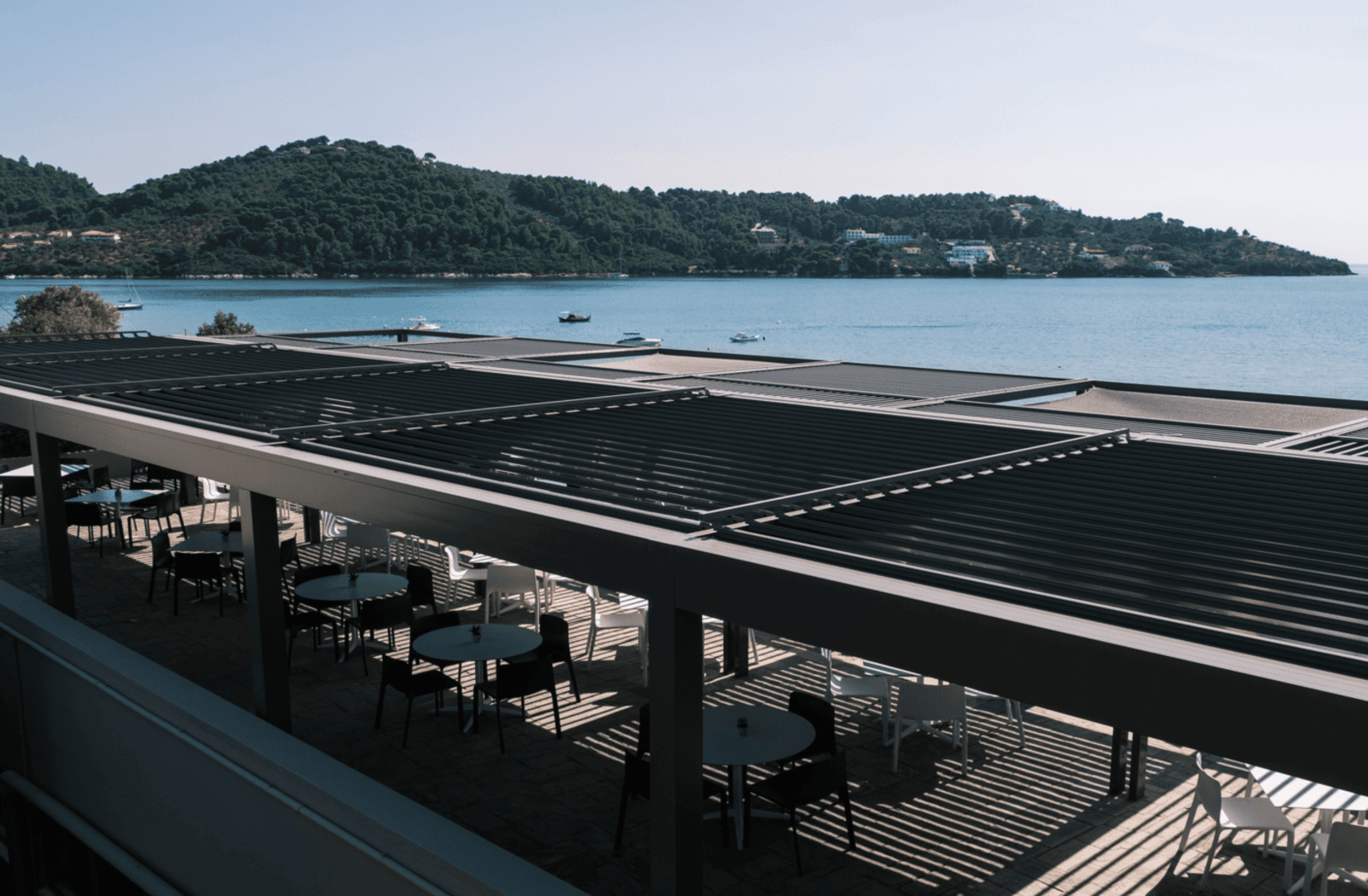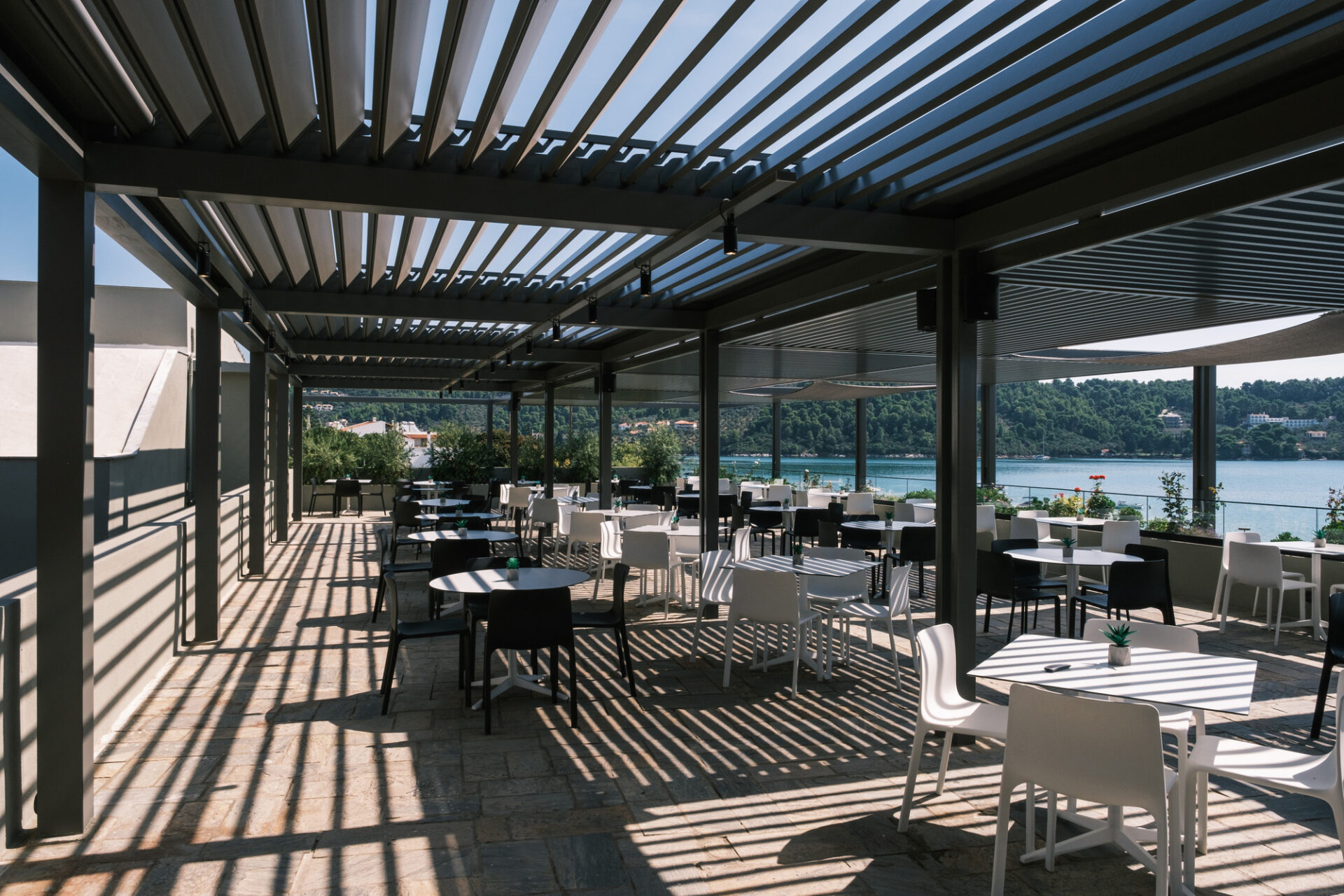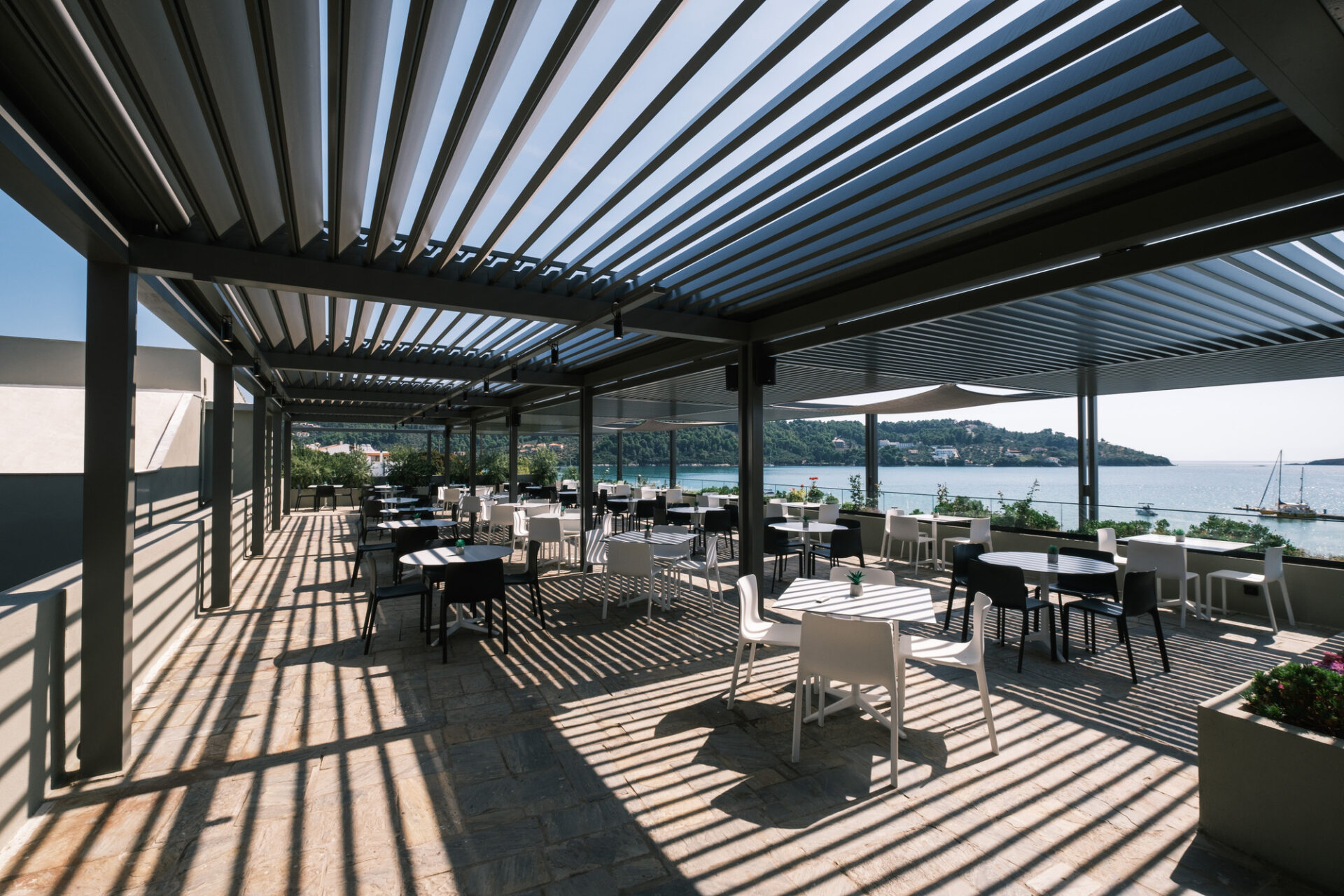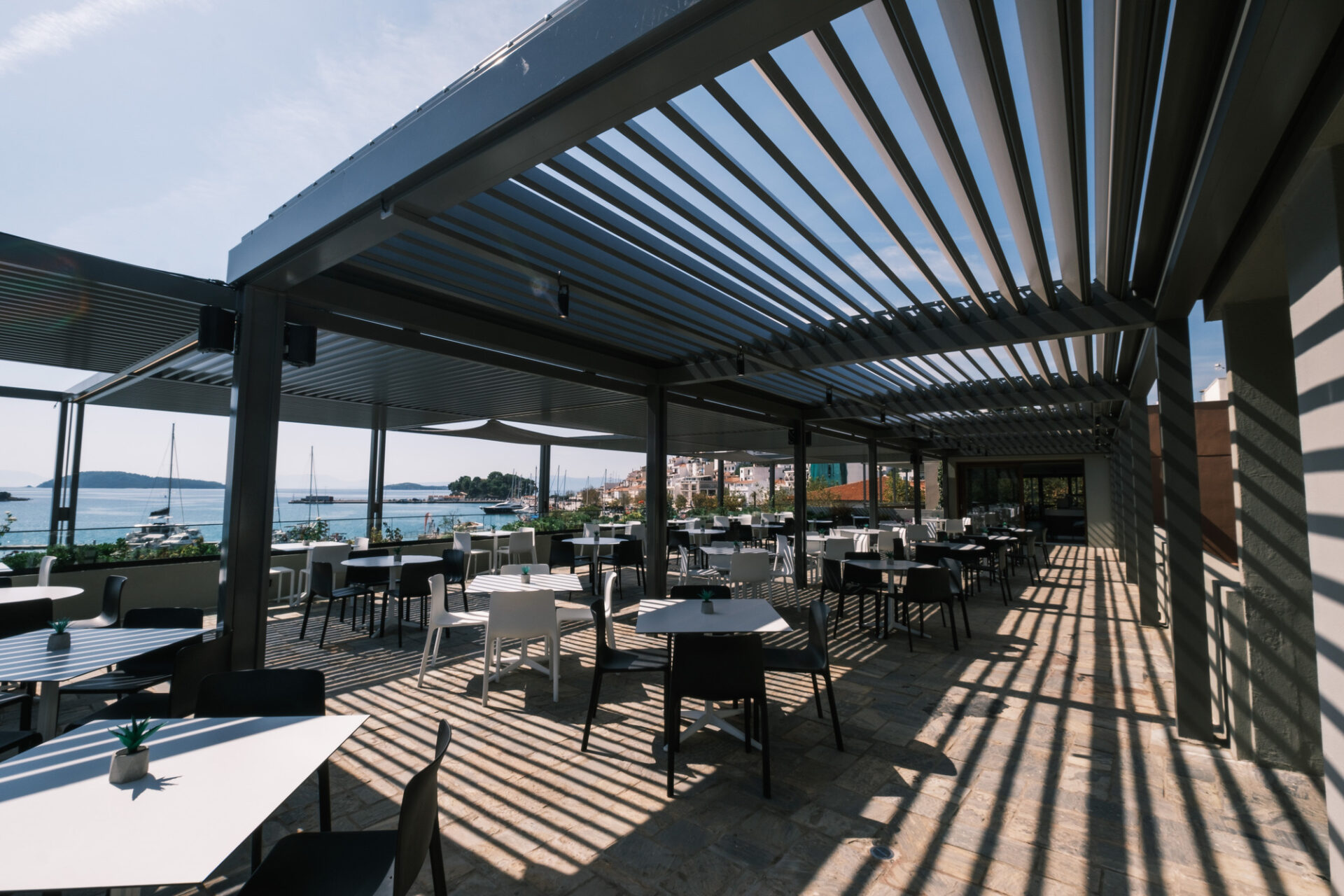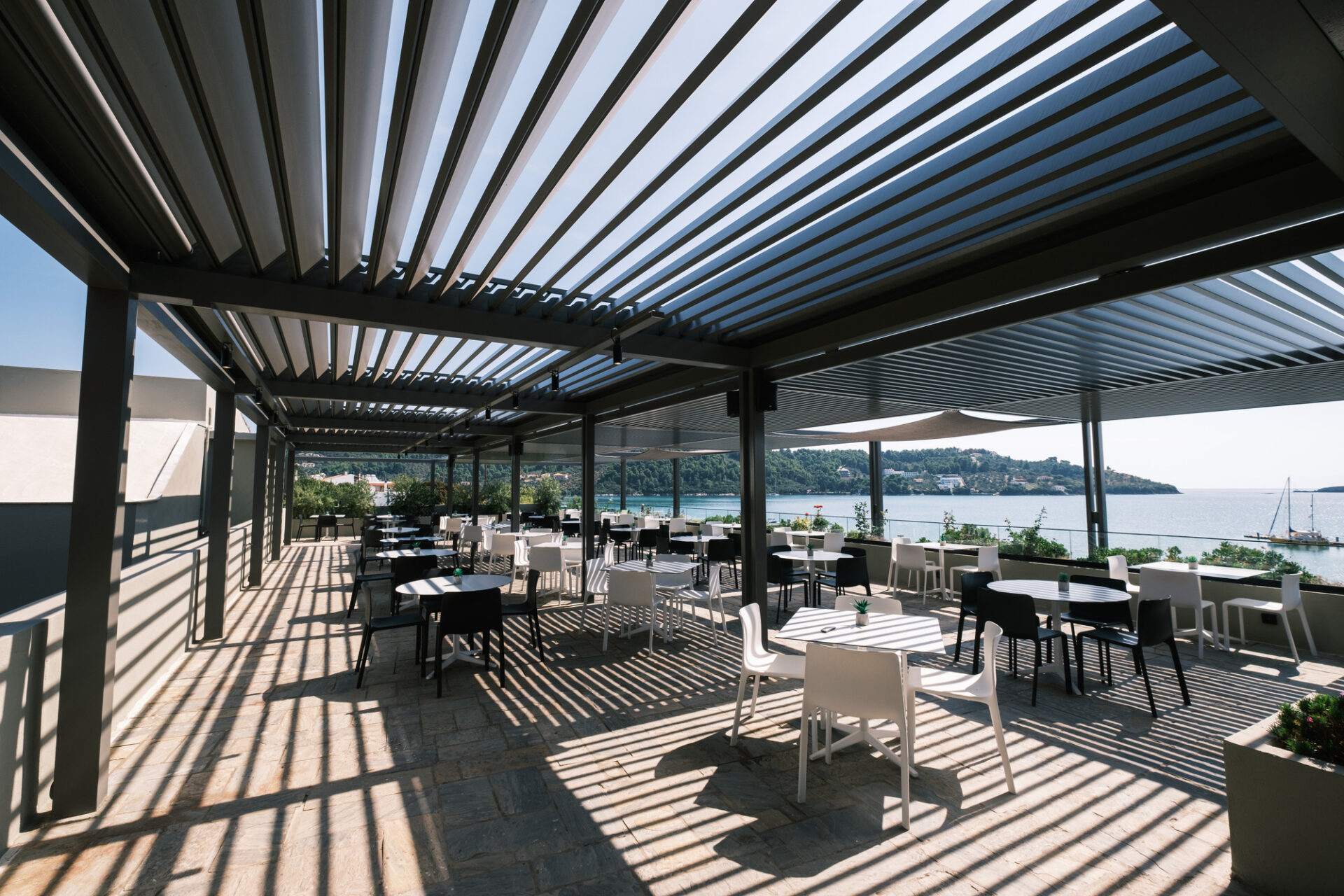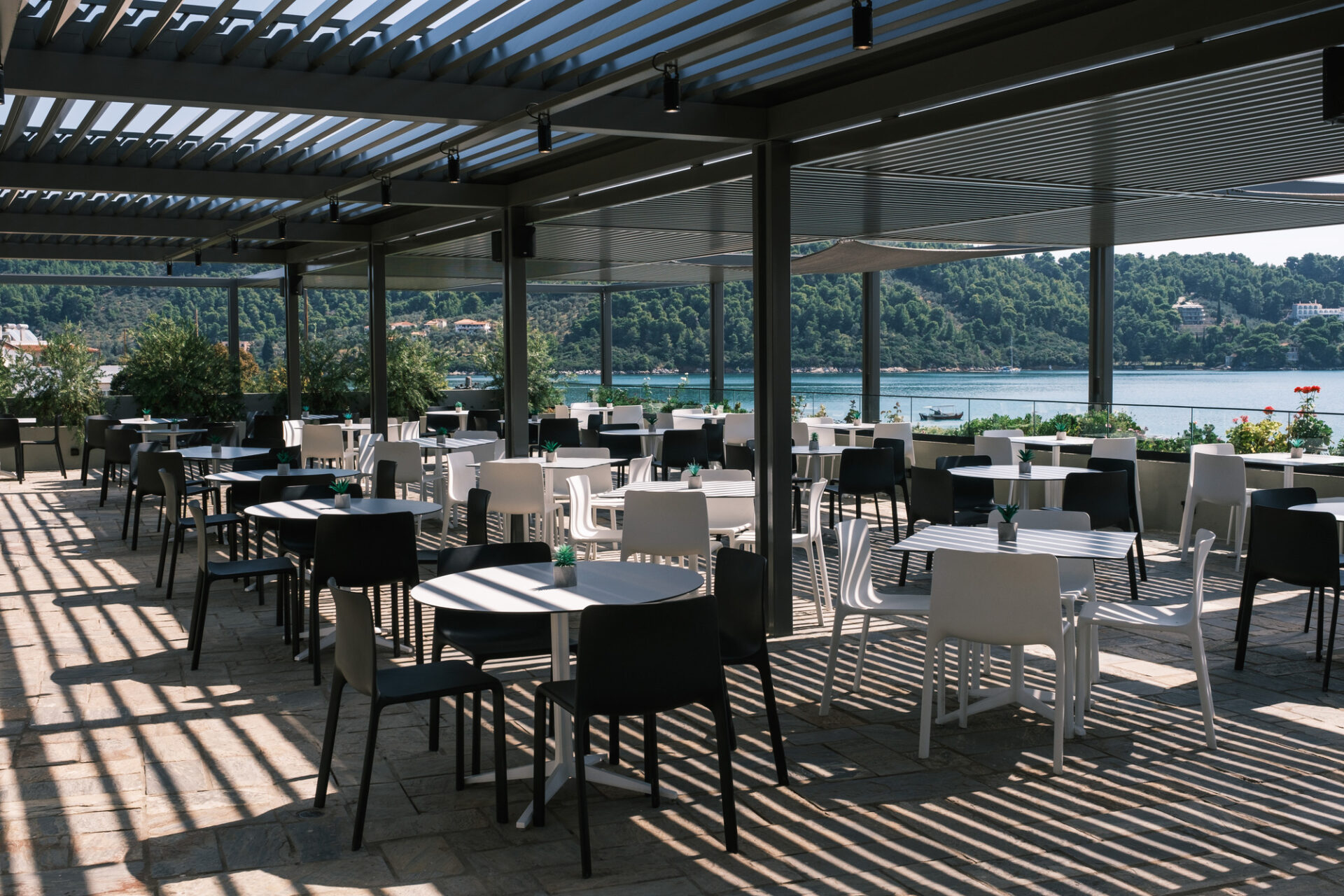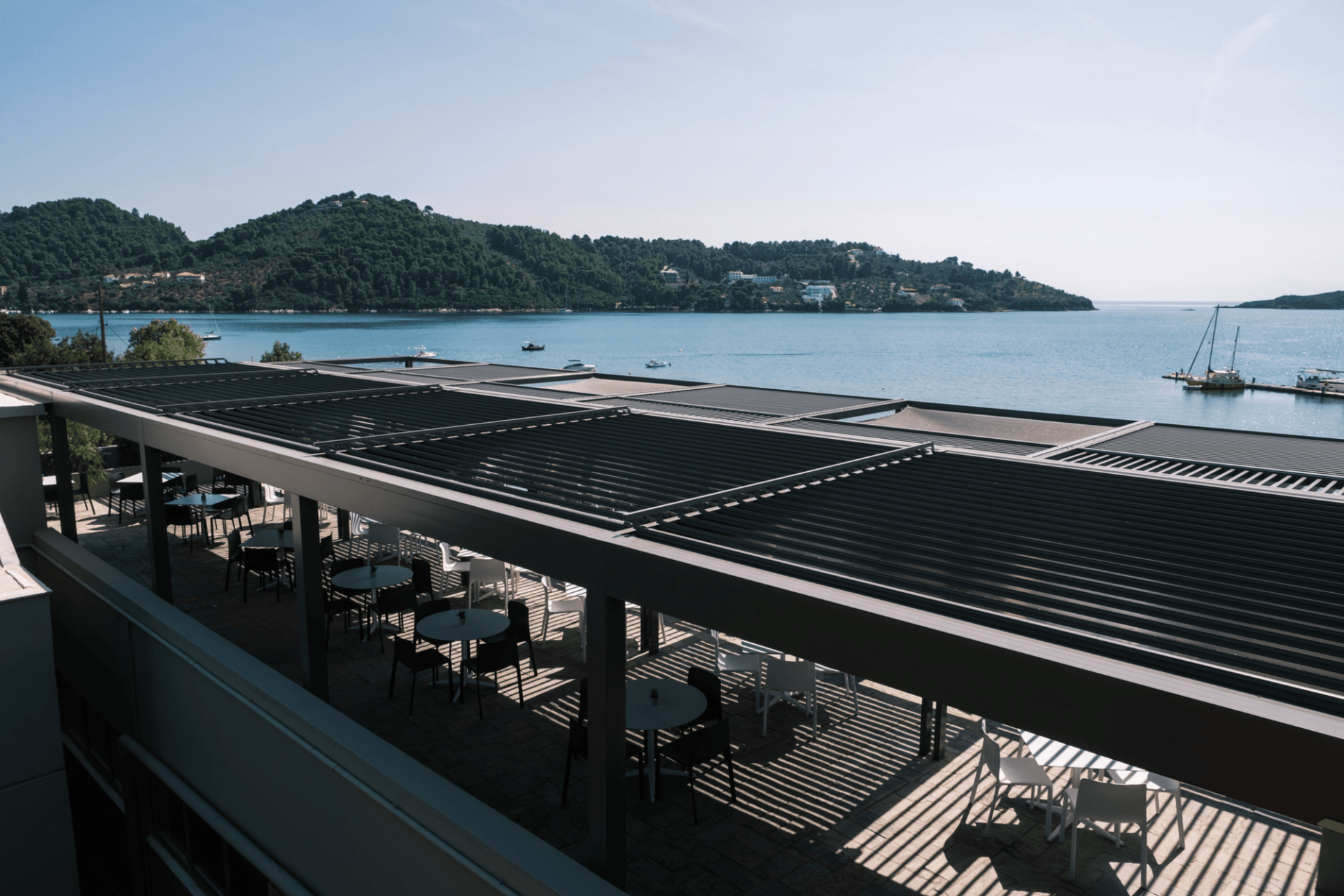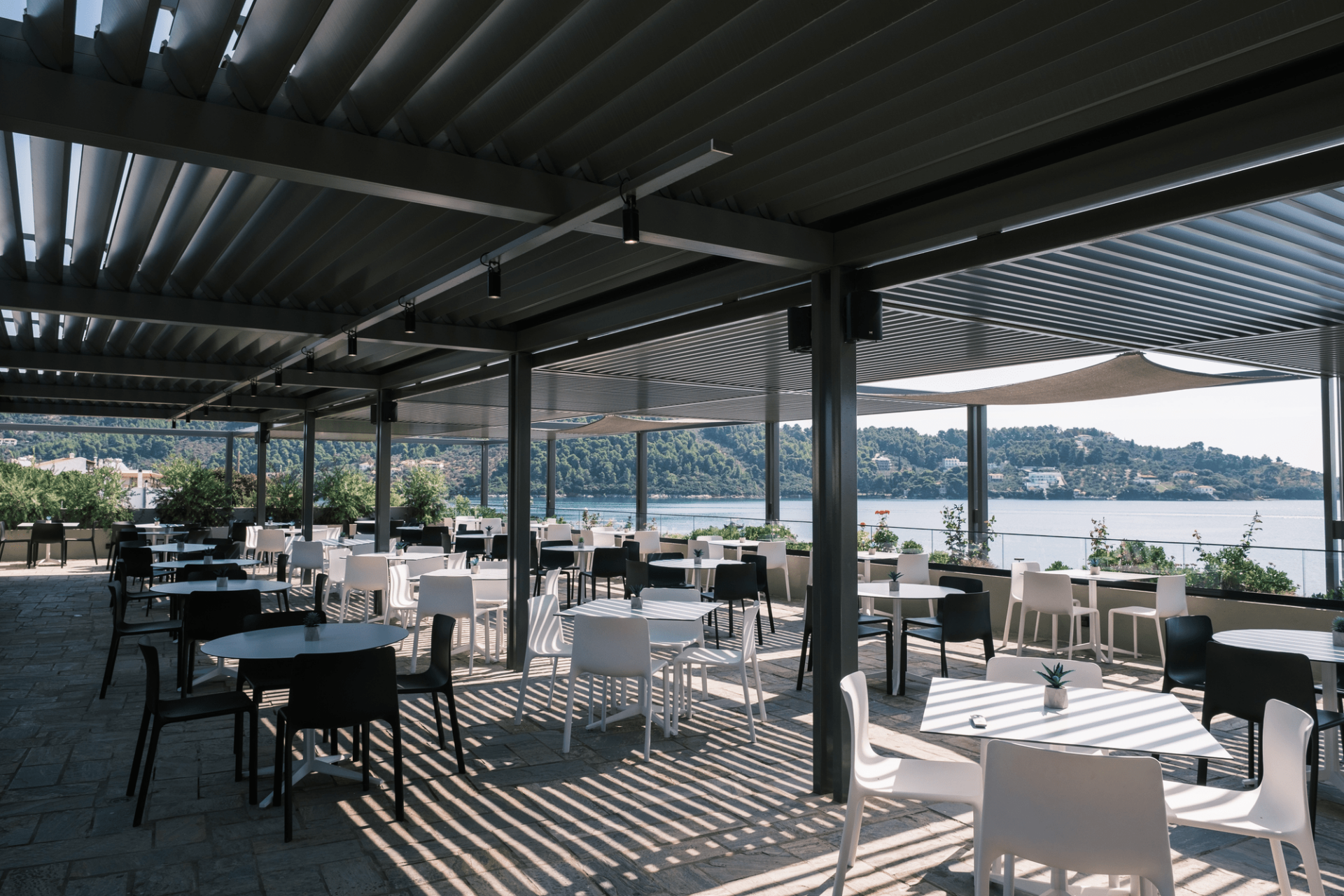Conceived by N. Hadjimichalis and Heide Hadjimichalis-Schwartz in the mid-70s, this hotel stands prominently along a scenic coastal road near a bustling port. Originally built to the standards of its time, recent renovations aimed to modernise and restore its significance to the island’s tourism landscape.
Over its 43-year history, numerous alterations have veered the complex away from its original architecture. The architectural redesign focused on reclaiming its timeless identity, accentuating its inherent structure while integrating new elements as requested by the proprietors.
An integral part of the building’s design lies in the metallic components adorning the facades, culminating in the roof pergola. To revitalise the space aesthetically and functionally, the existing pergola gave way to the Santorini PG160P bioclimatic pergola—a durable, sleek solution providing optimal protection for Roof Garden patrons. This pergola boasts an automatic rotation mechanism in its blinds, creating a bespoke microclimate.
Linear lighting was strategically placed along the structure’s height and at its pergola’s culmination to showcase the building’s aesthetics. Incorporating new railings and wooden room dividers distinguished by metal elements further enhances the overall ambience.
Within the public areas of the hotel wing, external modifications were primarily focalised, notably the reconfiguration of the main entrance area to integrate a disabled ramp while augmenting its appeal. In the entrance’s backdrop, a partition composed of vertical wooden sections demarcates the pool area.
The hotel complex’s facades received a fresh coat of paint in two earthy tones, brick red and grey, drawing inspiration from a vintage postcard dating back to 1978. Metal elements, including frames, were coated in a dark grey hue.
The reception area was transformed, with a more streamlined space and a central focal point—the monolithic front desk. The continuation of the cotto flooring onto the background and ceiling creates a seamless flow around the reception. Additionally, restored façade ceilings now serve as illuminating elements throughout public spaces.
The repositioning of the circulation corridor introduced more seating and established a new opening, connecting the space to the communal garden of other rooms. Furthermore, the bar underwent reconfiguration and expansion into the side courtyard, seamlessly merging with a pergola.







